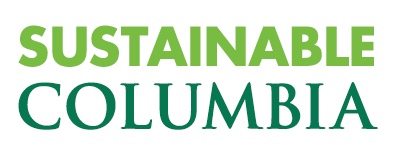In anticipation of 100% renewable grid energy, the University is working to electrify its campus operations including the vehicles used on its bus routes.
Heat pumps work by transferring heat from inside a space to the outside, like a refrigerator. They can both cool, like an air conditioning unit, and heat, eliminating the need for fossil fueled heating like gas burners.
Joins NYC Mayor’s Office at Plant-Powered Carbon Challenge Launch
Responsible Materials Management is one of the key commitments under Sustainable Columbia’s Plan 2030. Columbia has committed to matching New York City's zero waste goal by 2030, which will require all campuses to accurately quantify waste streams.
Daniel and Edgar, Sustainable Development undergraduates from the School of General Studies, have both contributed to a variety of projects with the Office of Sustainability during their time as interns. Read below what they've written about their experiences, and what they plan to do next!
Columbia and consulting firm WSP will assess, update, and create policies to deliver a new sustainability standard that ensures all building design and construction decisions are aligned with Plan 2030’s science-based targets and Local Law 97 (LL97).
Geothermal energy is hot right now on the renewable energy market. Ground-source heat exchange systems access the earth’s constant temperature at depths reaching 1,000 feet as a heat sink and source to cool and heat buildings on the surface.
Jessica Prata Cianciara has been recognized as a 'Notable Leader in Sustainability' by Crain's New York Business.
Currently under renovation, Columbia University's residential building at 611 West 112th Street is a seven-story structure covering 44,533 square feet that will stand as a beacon of sustainability and modern efficiency.
Currently under renovation, Columbia University's apartment building for graduate students and faculty at 518 W. 111th Street is a six-story structure covering 43,000 square feet whose sustainable design and construction standards will pave the way for future renovations.
Converting to LED lighting is a key step towards meeting Columbia’s Plan 2030 targets, as well as complying with Local Laws. Learn about how Columbia University Irving Medical Center (CUIMC) is tacking these upgrades across its campus portfolio.
The event’s mission of supporting the integration of climate teaching across disciplines and fostering connections to campus as a living lab supports Columbia’s Plan 2030 and the Office of Sustainability’s new implementation pathway Living Net Zero.
Progress over the recent calendar year on electrification, retro-commissioning, LED lighting, data collection, and more all contribute to Columbia’s road to net zero emissions.
Join The Climate School and Columbia’s Office of Sustainability at our annual Earth Month Showcase 2024!
